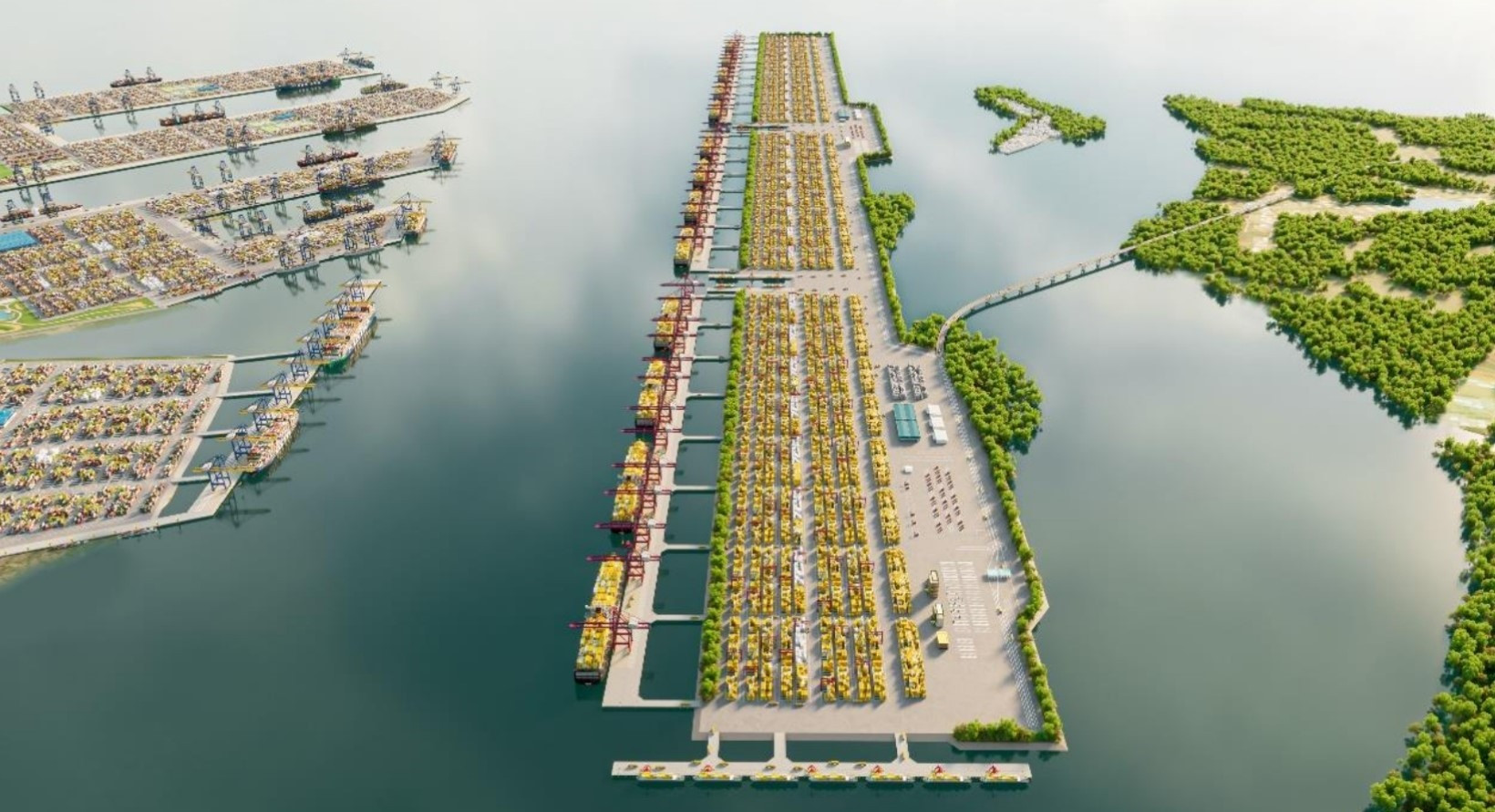Instruction on formulating the detailed Planning for groups of seaports in Vietnam
The Deputy Prime Minister of the Government of Vietnam instructs the formulation of detailed planning for groups of seaports, berths, wharves, buoy zones, water areas, and regional waters for the period 2021 - 2030, with a vision towards 2050.

Instruction on formulating the detailed Planning for groups of seaports in Vietnam(Image from the Internet)
Instruction on formulating the detailed Planning for groups of seaports in Vietnam
On August 28, 2024, Deputy Prime Minister of the Government of Vietnam Tran Hong Ha chaired a meeting on the Detailed Port Group Planning, including ports, wharves, buoys, water areas, in the period of 2021 - 2030, with a vision to 2050 (hereinafter referred to as the Detailed Port Group Planning).
The Detailed Port Group Planning is a specialized technical planning according to the Planning Law, specifying the overall development plan of Vietnam's port system for the period of 2021 - 2030, with a vision to 2050. To ensure the quality and adequacy for consideration and approval, according to Notice 406/TB-VPCP dated September 05, 2024, the Deputy Prime Minister requested:
- Assign the Ministry of Transport and the Office of the Government of Vietnam to thoroughly review the process, procedures, and authority (the process of developing, appraising, and approving the Detailed Port Group Planning) to ensure compliance with the laws on planning, maritime, transportation, and related regulations.
- The Ministry of Transport, the planning development agency, and consulting units are fully responsible for the accuracy of the information and data of the Detailed Port Group Planning; responsible for forecast results and consistency between the Detailed Port Group Planning and related plans (National Master Plan for the period of 2021 - 2030, with a vision to 2050; Overall Development Plan of Vietnam’s Port System for the period of 2021 - 2030, with a vision to 2050, National sectoral plans, Regional plans, and Provincial plans...), adhering to the principle that lower-level planning must comply with higher-level planning.
- The content of the Detailed Port Group Planning must ensure principles and viewpoints of synchronized and unified planning based on scientific criteria, considering reasonable "dynamic" and "open" planning, anticipating solutions to planning issues when new factors emerge. The Ministry of Transport, the planning development agency, must regularly monitor and evaluate, and promptly report to the competent authority when unexpected, unpredictable conditions arise;
- Newly added ports and port areas must be considered and evaluated based on objectives, vision, and overall efficiency to achieve a "win-win" situation; assessing the relationship and impact of new ports on altering or affecting large, strategic projects. Particularly, group No. 4 related to Cai Mep Ha Port, Cai Mep Thuong Port in Cai Mep - Thi Vai area, and Can Gio International Transshipment Port must be thoroughly researched, evaluated, and carefully calculated.
- Although it is detailed planning, it should not be "rigid," and must ensure comprehensiveness and visionary as a premise for specific implementation in the planning of land and water areas of the port; the planning mindset must create good infrastructure investment projects to attract potential investors (shipping companies, enterprises).
- Explore some mechanisms and policies for port infrastructure development and effective implementation of the plan, specifically considering state investment in some critical, necessary ports for management; clearly delineate the responsibilities between the state and investors in investing in port infrastructure and port operation infrastructure.
- Number of deputy directors of departments in Vietnam in accordance with Decree 45/2025/ND-CP
- Cases ineligible for pardon in Vietnam in 2025
- Decree 50/2025 amending Decree 151/2017 on the management of public assets in Vietnam
- Circular 07/2025 amending Circular 02/2022 on the Law on Environmental Protection in Vietnam
- Adjustment to the organizational structure of the Ministry of Health of Vietnam: Certain agencies are no longer listed in the organizational structure
- Vietnam aims to welcome 22-23 million international tourists in Vietnam in 2025
-

- Number of deputy directors of departments in Vietnam ...
- 15:04, 05/03/2025
-

- Cases ineligible for pardon in Vietnam in 2025
- 14:43, 05/03/2025
-

- Decree 50/2025 amending Decree 151/2017 on the ...
- 12:00, 05/03/2025
-

- Circular 07/2025 amending Circular 02/2022 on ...
- 11:30, 05/03/2025
-

- Adjustment to the organizational structure of ...
- 10:34, 05/03/2025
-

- Notable new policies of Vietnam effective as of ...
- 16:26, 11/04/2025
-
.Medium.png)
- Notable documents of Vietnam in the previous week ...
- 16:21, 11/04/2025
-
.Medium.png)
- Notable documents of Vietnam in the previous week ...
- 16:11, 02/04/2025
-
.Medium.png)
- Notable new policies of Vietnam to be effective ...
- 16:04, 02/04/2025
-
.Medium.png)
- Notable new policies of Vietnam effective from ...
- 14:51, 21/03/2025

 Article table of contents
Article table of contents
